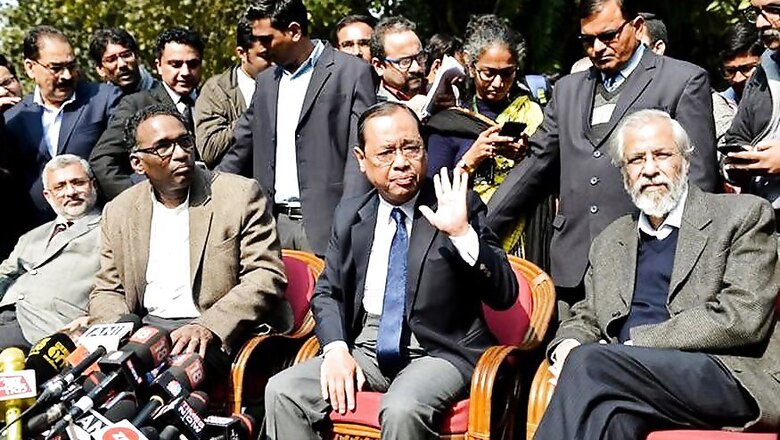
views
New Delhi: Amid reports that a Full Court meeting may take place in the Supreme Court of India anytime soon to resolve the issues raised by the four senior most judges in a press briefing on Friday, News18 explains how such a meeting is convened and the procedures that are likely to be followed. Multiple legal experts, including former SC judges, have told News18 that a Full Court would be an ‘ideal setting’ to seek wider consensus on administrative reforms in higher judiciary.
WHAT DOES FULL COURT MEETING MEAN IN PRESENT CONTEXT?
The primary issues highlighted by Justices J Chelameswar, Ranjan Gogoi, Madan B Lokur and Kurian Joseph would have to be presented before all the 25 judges of the apex court, including the Chief Justice of India, Dipak Misra.
In this convention, all judges would be required to sit together, discuss the issues and arrive at a conclusion.
Justice Samaresh Banerjea, former Judge of the Calcutta High Court, says, “All the SC judges will have to take charge of the situation and the judiciary has to venture into this. A Full Court meeting has to be called, which involves all the judges of the Supreme Court. All judges would have to give their opinion on the matter… We are no one to judge the CJI or condemn him.”
WHO CAN CALL THIS MEETING?
It remains an undisputed fact that the CJI is not only the master of the roster, but also the leader of both the administrative side as well as the judicial side.
Hence, according to the custom, it is only the Chief Justice of India who can call for a Full Court meeting. If the CJI decides that the grievances raised do not merit for a Full Court, the meeting is unlikely to take place. The last and binding call on the outcome of meeting is also for the CJI to decide and only he can consider the views of the other judges.
HOW WAS THIS CONVENTION DERIVED?
The roots of the custom lie in the ‘en banc session’, which is a meeting in which a case is heard before all judges of the court. The term ‘en banc’ review was often used for complex cases with far-reaching ramifications.
In some countries, en banc hearing is common and not an exception. The Supreme Court of the United States, and the highest courts of most countries, do not sit in panels, but judges hear the cases ‘en banc’, unless a judge opts out due to ill health or recusal.




















Comments
0 comment